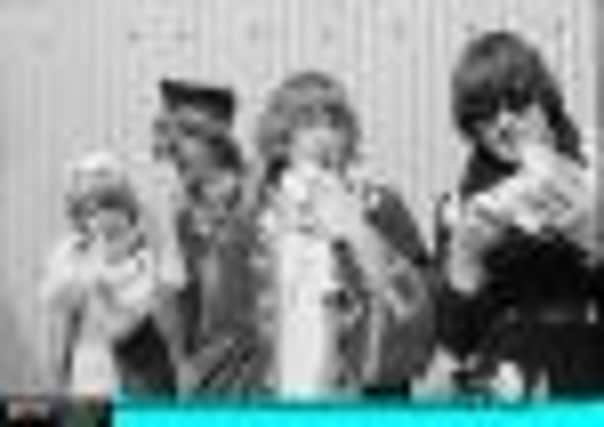Obituary: Kevin Ayers, Canterbury scene icon who flirted with, but never made, the big time


As vocalist and bassist in the group Soft Machine, Kevin Ayers was one of the leading figures in the English psychedelic music scene in the late 1960s. A true musical maverick, Ayers was hugely respected and influential in the business, and he became a cult figure, though major commercial success always eluded him.
He quit Soft Machine after just one album to embark on a solo career, but seemed to lack ambition and drive. He did, however, have a great sense of fun.
Advertisement
Hide AdAdvertisement
Hide AdHis music was difficult to pigeon-hole – he played with Mike Oldfield and Elton John, toured with Jimi Hendrix and recorded his own version of Falling in Love Again, a song more readily associated with Marlene Dietrich.
He was a headline act at the legendary Festival of Popular Music in 1976 at the Edinburgh Playhouse, along with the likes of Queen and Elton John. However, attempts to break him with a wider audience repeatedly stalled. Often he was the author of his own misfortune.
A couple of years earlier, he had been part of a very short-lived supergroup with Nico, Brian Eno and John Cale. But the seeds of the band’s demise were sown the night before their debut concert when Ayers slept with Cale’s wife, which did little for esprit de corps.
Latterly, Ayers lived as a recluse near Carcassonne in the South of France. But word spread of a set of new songs he had taped on a cassette recorder in his kitchen and the Scottish band Teenage Fanclub was instrumental in bringing him to Glasgow and complete one final album.
Ayers was born in Kent in 1944. His father was Rowan Ayers, a BBC producer, who would create the Old Grey Whistle Test. His parents separated, his mother remarried and Ayers spent part of his childhood in Malaya, though he went to secondary school in Canterbury.
In the mid-1960s, he joined a group called the Wilde Flowers, whose line-up included his old schoolfriend Robert Wyatt.
Within a couple of years the group had split into the Soft Machine, with Ayers and Wyatt, and Caravan. Ayers played guitar and bass and shared vocals with Wyatt.
The band, who took their name from a William Burroughs novel, were influenced by rock, jazz and folk and often shared the bill with Pink Floyd at the UFO Club in London.
Advertisement
Hide AdAdvertisement
Hide AdTheir debut album, The Soft Machine, came out in 1968, the year after the Beatles’ Sgt Pepper.
The music scene had changed dramatically in the few years since the Beatles first appeared. Hair seemed to have been uncut since the early part of the decade, groups’ names had become ever more bizarre and the album was beginning to establish itself as the preferred medium for the creative ambitions of serious bands.
After touring the US with Hendrix, Ayers quit Soft Machine, sold his guitar and took himself off to Ibiza, with the expressed intention of simply enjoying the sunshine, drinking wine and smoking cannabis.
However, he also found time to write the diverse selection of songs that would become Joy of a Toy, his debut solo album, though other Soft Machine members played on it. It came out in 1969, just a year after The Soft Machine. Influences ranged from circus music to Malayan folk.
It promised much, but Ayers took a slightly bizarre turn with his next album, which he recorded with a new band called The Whole World. The line-up included Mike Oldfield and avant-garde composer David Bedford. Whereas Joy of a Toy had been strange, but accessible, Shooting at the Moon was strange and often inaccessible and did little to expand his audience.
He seemed to get back on track with the album Bananamour and signed up with Elton John’s manager, the Scot John Reid, who put together the short-lived Ayers-Cale-Eno-Nico combo. They produced one live album called June 1, 1974, that being the date of their debut at London’s Rainbow Theatre. Presumably May 31 was the date of the other Ayers-Cale collaboration. The expression on the faces of the two musicians on the cover is priceless. Ayers is smiling, Cale is not.
Reid was also behind the Festival of Popular Music in Edinburgh in 1976, when Kevin Ayers topped the bill, with Soft Machine and rather oddly, or perhaps not, the poet Ivor Cutler as support acts.
Ayers had recently recorded the album Yes We Have No Mañanas... So Get Your Mañanas Today, which was as esoteric and playful as ever.
Advertisement
Hide AdAdvertisement
Hide AdIt included his version of Falling in Love Again and a great wee ditty called Mr Cool – “Whatever happened to Mr Cool… He thought he knew, but he did not; Now his name is Mr Hot.” Imagine if Sgt Pepper had been recorded by Chas and Dave and you might begin to get just some idea of Kevin Ayers’ music.
Ayers went on recording throughout the 1970s and 1980s and then disappeared for most of the 1990s and the first half of the 2000s.
Latterly he lived in France, where he met an American artist called Timothy Shepard and played him some home recordings. Shepard encouraged him to record them for an album and Ayers went to the US for the initial recording sessions.
Teenage Fanclub heard about the half-finished album, contacted Ayers and persuaded him to continue recording with them at the Yip Jump studio in Glasgow.
The Unfairground came out to critical acclaim in 2007. His first album for 15 years, it sounded like a swansong.
Ayers said it was “very much a reflective album – lost love, lost feelings, lost sensibilities”.
He is survived by three daughters.
BRIAN PENDREIGH